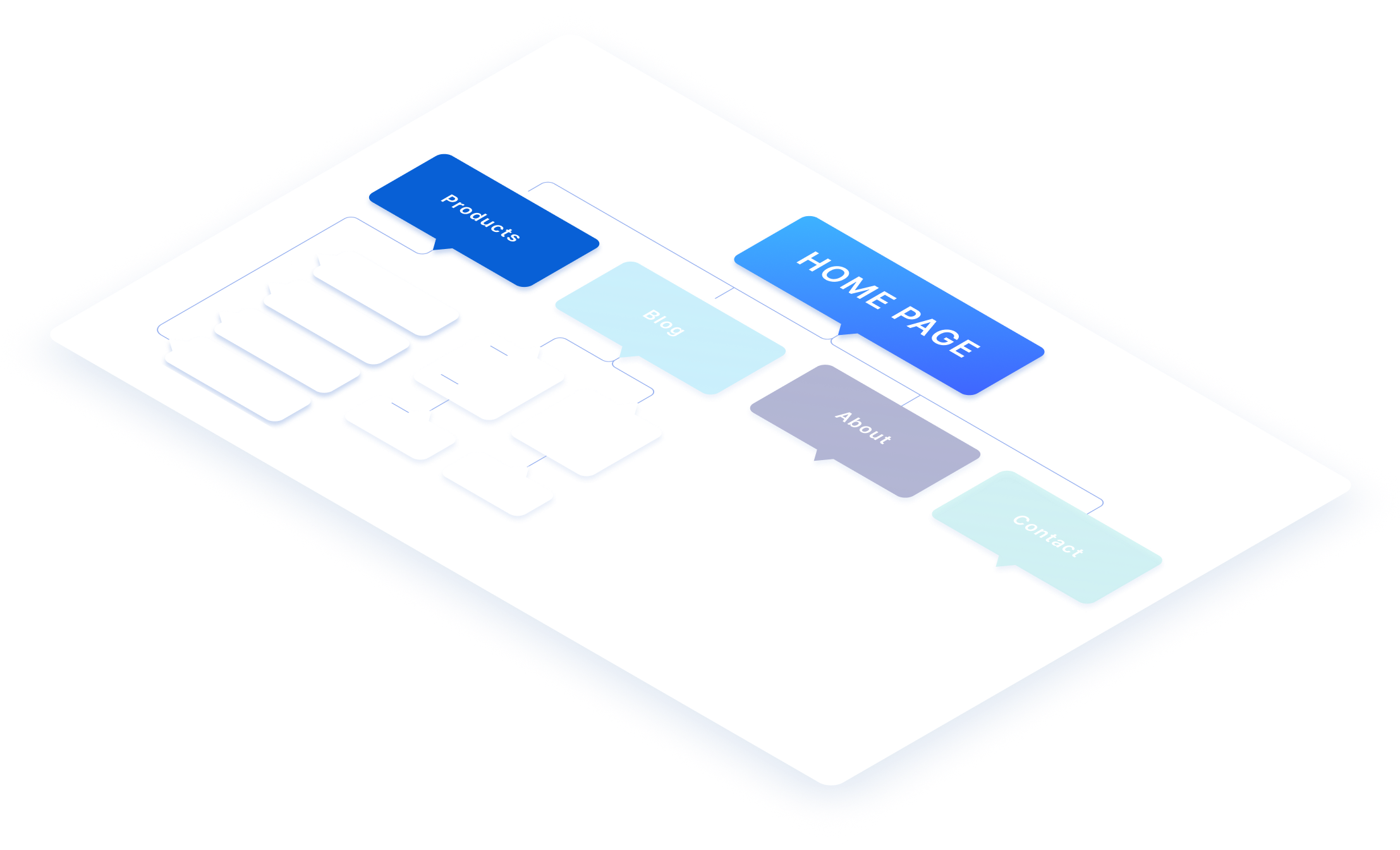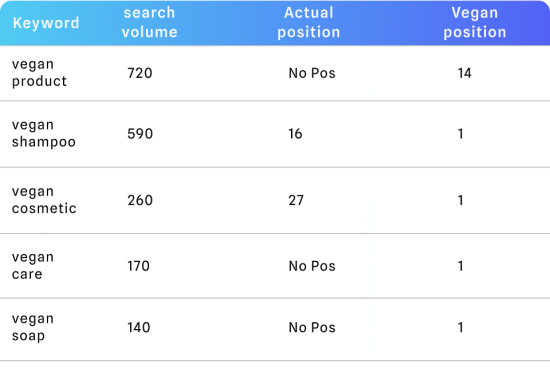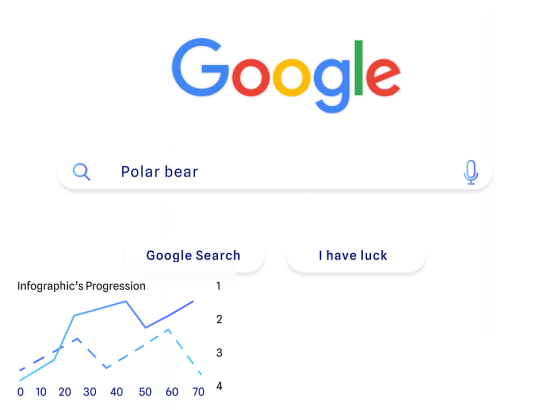
Semantic Analysis: Find the Right SEO Keywords
A semantic analysis involves analysing a website’s content to identify the most effective keywords for enhancing its SEO performance.

Key Principles of a Semantic Analysis in SEO
What exactly is a semantic analysis?
As an integral part of website SEO analysis, a semantic analysis is closely tied to content examination – one of the three main areas covered in a comprehensive SEO audit, alongside technical aspects and popularity. The primary objective is to identify the search terms used by your target audience when seeking information related to your industry, products/services, market, and even your company or brand name. By conducting a meticulous analysis of your existing website content, this semantic analysis helps you determine the relevant themes and semantic niches that offer opportunities to optimise your pages within the SERP.

Why is semantics so crucial in SEO?
A decade ago, SEO practices often boiled down to stuffing a page with as many keywords as possible and generating numerous backlinks, regardless of their quality. But times have changed. Search engines now focus on user behaviour and the employed semantics. Optimising content today means not only finding the right keywords but also understanding what users genuinely seek when they formulate their queries. The aim is to provide them with contextualised information that not only addresses their initial request but also aligns with their intentions. This has propelled us into the era of semantic search, and ignoring it is not an option for SEO.

Who benefits from semantic optimisation?
-
Search users
Semantic optimisation significantly enhances the user experience. Instead of having to navigate through an array of content to find the desired information, which can be quite frustrating, users are presented with search results that promptly and accurately cater to their initial query. Semantic optimisation enables the provision of qualitative and comprehensive content that aligns with users’ search intentions.
-
Search engines
Search engines are dedicated to delivering answers to users. Semantic optimisation, coupled with the development of machine learning technologies, provides them with the opportunity to display increasingly relevant results. In this regard, Google has been making remarkable progress in this direction since the introduction of the Hummingbird update. RankBrain, BERT, and MUM are all aimed at better understanding queries, the language used, and the underlying intentions.
What is the purpose of semantic analysis?
You’ve probably gathered that semantic analysis is a vital step in any website’s SEO strategy. But what exactly can you gain from it? In other words, what does it actually do? Let’s take a look at the specific benefits:
-
Refining your SEO strategy
Semantic analysis helps fine-tune your SEO content strategy by identifying the relevant themes to address, intentions to cater to, keywords to use, and appropriate lexical choices.
-
Better understanding your audiences
By uncovering the keywords they use and analysing their intentions, semantic analysis enables a deeper understanding of your audience’s challenges and needs.
-
Producing relevant content
One of the key outcomes of semantic analysis is the ability to create compelling content that genuinely meets the needs of internet users. This, in turn, drives traffic and boosts conversion rates. It also provides an opportunity to enrich existing content.
-
Identifying new opportunities
Semantic analysis opens up avenues for discovering new opportunities. By identifying untapped keywords and user intents, you can create fresh pages and content such as blog articles or semantic cocoons to position your website more effectively in the SERP.
-
Defining the site’s structure
Semantic analysis helps in organising your website’s structure by categorising pages based on the keywords that require attention. This approach ensures that your website aligns with user search intents and improves overall user experience.
-
Positioning more pages
By actively working on a broader range of keywords through semantic analysis, you increase the potential for positioning more pages in the SERP. As a result, your website gains greater visibility to a wider audience.
-
Satisfying your target users
By providing higher-quality, more relevant, and readable content (avoiding keyword stuffing), showcasing your expertise.
-
Captivating crawler robots
Through significantly improving SEO signals and content quality—both factors that search engine robots are sensitive to.
-
Boosting domain authority
Harnessing this expertise can potentially boost your authority, thereby generating natural backlinks and improving your SEO performance.
When is the ideal time to conduct a semantic analysis?
Similar to any type of audit, there are opportune moments to carry out a semantic analysis on a website. These include during the website’s design or revamping phase, when implementing or redirecting an SEO strategy, or during significant changes such as restructuring the site to incorporate a semantic cocoon. Nevertheless, semantic analysis can be conducted at any point in a website’s regular lifecycle, even for the purpose of enriching the editorial calendar with fresh content ideas. To take advantage of its benefits, it’s highly recommended to seek the guidance of a web agency.
How to conduct a semantic analysis in SEO
Content, keywords, and intentions
Before delving into the specifics of performing a semantic analysis, it’s essential to clarify the purposeful use of keywords in content. This usage is not random; it adheres to precise rules dictated by the SEO strategy’s direction and the needs and expectations of internet users. Therefore, every piece of content (whether informative, promotional, or engaging) should align with the user’s intention expressed through the search terms used. In this context, we can distinguish four distinct “intentions” behind keywords: informational terms (to find information), transactional terms (to prepare for a future action), commercial terms (to purchase a product or service), and navigational terms (to access a specific website or content via a search engine). Keeping these distinctions in mind is crucial before embarking on a keyword hunt!

The 7 Steps of Semantic Analysis
When it comes to conducting a semantic analysis for a website, there are specific stages that should be followed. Here are the main steps involved:

-
Step 1
Exploring your themes
Determine the focus of your website. What information do you want to provide to your users? Consider your industry, profession, offerings, and target audience. Explore different themes and topics to address, and create a map of associated lexical fields.
-
Step 2
Analysing SEO rankings
Evaluate the current position of your existing content in the SERP. How are your pages performing? Which keywords have you successfully targeted? Conduct a semantic analysis to assess your website’s performance, identify content that requires improvement or enrichment, and plan future publications.
-
Step 3
Examining competitor strategies
It’s important to analyse the strategies employed by your direct competitors. Study the keywords they are targeting and the search queries on which they have achieved good rankings in the SERP. Determine how you can incorporate similar terms into your own content to gain a competitive edge.
-
Step 4
Identifying relevant keywords
Use dedicated tools (mentioned below) to find relevant keywords that will enhance your SEO performance. Based on your list of themes and topics, try these tools to extract suitable search queries to incorporate into your content. Focus on keywords that will drive qualified traffic to your website.
-
Step 5
Analysing different methods
Apart from SEO tools, there are other methods to discover interesting keywords. For example, analyse the search terms used by users on your internal search engine, pay attention to customer questions, or explore the suggestions provided by Google when entering relevant search expressions.
-
Step 6
Sorting keywords
In this stage, select the most relevant keywords to integrate into your content strategy. Consider three criteria: relevance, popularity (search volume), and competition level (indicating the difficulty of ranking for a particular keyword). The next section will delve deeper into choosing search queries.
-
Step 7
Implementing recommendations
Once the semantic analysis is complete, it’s time to put the recommendations provided by your SEO agency into action. These recommendations translate into concrete tasks that need to be executed on your website. This may include optimising pages by strategically placing keywords, enriching bare content, and utilising semantic fields to enhance your SEO efforts.
Which tools are available for conducting a semantic analysis?
Various tools can help when conducting a high-quality semantic analysis. For assessing the SEO performance of your website and evaluating search engine rankings, Google Search Console is a valuable resource. A comprehensive solution like Ahrefs can be employed to conduct a detailed analysis of keywords used on your site and those used by competitors. To identify keyword opportunities, numerous options are available, including Google Keyword Planner, SEMrush Keyword Magic Tool, Ubersuggest, Moz Keyword Research Tool, Answer the Public, Google Suggestions, and question-and-answer forums like Quora. It’s important to remember that an SEO agency possesses the necessary tools and methodology to effectively perform a semantic analysis and provide insightful recommendations.

How to utilise the results of a semantic analysis
-
Identifying relevant keywords for your SEO
Semantic analysis helps identify three categories of keywords: those already present on your site, those used by your competitors, and those that can be used to optimise your site. It’s the last category that we are interested in here. However, the audit provides a raw list that cannot be used as is, so it needs to be refined to select the queries on which to concentrate your efforts. Here’s how to do it.
-
Measuring keyword relevance
When determining which keywords to utilise in your SEO strategy, ask yourself the following questions: Does the topic related to the query appeal to your audience? Is the keyword consistent with your business, company, and services offered? Can you create valuable content around this query?
-
Estimating keyword performance
Not all keywords perform equally. Search volume serves as a good indicator, highlighting the number of times users enter the query on search engines. Some tools even provide an estimation of the traffic received by pages ranking in the SERP for the chosen terms.
-
Analysing search intent
What is the user looking for? Remember, there are four types of intent: informational, transactional, commercial, and navigational. Select the keywords to focus on based on the specific intent you want your content to address, and take a moment to review the search results associated with a particular keyword to assess the type of information provided.
-
Evaluating query difficulty
Will it be easy or challenging to rank for a specific keyword? Keep in mind that certain keywords are more competitive than others. It can be quite difficult to achieve a high ranking, especially when competing against well-established pages with strong authority. In such cases, it may be wiser to target keywords with a lower difficulty score.
-
Identifying niche keywords
Don’t hesitate to choose less popular and less competitive queries that may generate lower traffic but have higher conversion potential. These are often referred to as “long-tail keywords.” The advantage of focusing on these terms is that they are usually more accessible and can bring in more qualified traffic, as opposed to broader, more generic search terms.
Optimising the content of web pages
When optimising your content after conducting a semantic analysis, it’s crucial to strike a balance between adhering to search engine guidelines and meeting the informational and readability needs of your audience. Keep the following rules in mind to effectively optimise your content.

-
Plan which pages to optimise or create
Anticipate your optimisation work by distinguishing between the content you need to create and the content you need to optimise. While it’s easier to optimise existing pages, your SEO strategy may also require creating new ones. Set clear expectations for the amount of work involved and establish a detailed editorial schedule.
-
Place keywords in your web content
Search engines recommend specific keyword densities in content (1% for Google), but the key is to distribute them naturally. It’s crucial to focus on the semantic field surrounding the target keyword to provide context to the query and align more precisely with the search intent.
-
Integrate keywords into HTML tags
HTML tags are powerful SEO tools that assist search engine crawlers in understanding page content. By placing keywords in tags such as the title tag, meta description, h1 headings, and alt attribute of images, you enhance the search engine’s comprehension and indexing of your content.
-
Produce high-value content
The quality and relevance of your content are fundamental for semantic optimisation. While it’s important to appeal to search engine algorithms, your primary goal is to deliver added value to users. Creating content that resonates with users not only improves their experience but also increases the likelihood of conversions and desired actions.
-
Increase the length of shorter content
If a piece of content contains less than 300 words, its SEO potential is limited, even if it is well-optimised. In such cases, you can take several approaches: adding more content, merging existing pages, or expanding the semantic context. However, it’s worth noting that this rule may not apply to certain specific pages, such as product listings on an e-commerce site.
-
Incorporate content with strong semantic potential
Certain types of content have a high semantic potential, such as a “semantic cocoon” – a network of pages that delve into various aspects of a topic. For example, if the topic is “real estate purchase,” you can create dedicated categories for property search, mortgage acquisition, interior design, and more. Make use of a diverse range of associated keywords.
Good to know
Once you’ve completed your optimisation, allow some time to pass, and then conduct a new semantic analysis! This follow-up analysis will enable you to assess the impact of your semantic optimisation efforts and uncover additional SEO opportunities.
Our Commitment
-
Expertise
Since 2010, we have worked with over 2000 clients across 90 countries.
-
Passion
We are a team of passionate, industry-focused individuals who are committed to your success.
-
Performance
We’re committed to implementing a data-driven strategy, making a real impact on your bottom line by providing avenues for growth.
Any questions?
A semantic analysis aims to analyse the content on a website and identify the keywords used by users in their searches. When combined with a comprehensive SEO audit that covers both technical and popularity aspects, this semantic examination helps guide the direction of the SEO strategy. The ultimate goal is to enhance visibility, drive traffic, build reputation, and increase conversions.
A semantic SEO analysis involves several steps. You need to explore the specific themes related to your business, analyse existing SEO positions, study competitor strategies, identify relevant keywords, analyse opportunities regarding the queries to focus on, and organise the keywords for future use. Finally, the website content should be optimised accordingly.
A semantic analysis provides a raw list of keywords. To identify the “right” ones that are most relevant to work on for your web pages, you need to assess their relevance, estimate their performance, analyse the search intent associated with these queries, evaluate their difficulty (whether you can rank for them or not), and identify niche keywords that are relatively easier to optimise.








